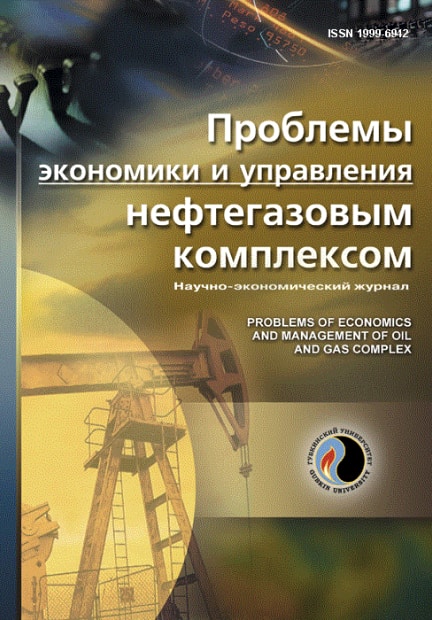Relationship and mutual influence of physical and derivative markets’ indicators at the background of the global oil market fragmentation
UDC: 338.45:662.6
DOI: -
Authors:
KATYUKHA PAVEL B. 1
1,
MISHCHENKO VYACHESLAV M. 1
1
1 National University of Oil and Gas "Gubkin University", Moscow, Russia
Keywords: architecture of the global oil market, spot (physical) and derivatives markets of oil, interaction between the spot and derivatives markets, fragmentation of the world oil market, benchmarks, oil market indicators
Annotation:
The dependence of the Russian oil and gas sector of industry on the Western indicators of both the physical and derivatives markets remains critical. Russia, as the largest producer and exporter of oil in the world, still continues to operate in the old global market model, while the world oil market is plunging into a state of increasing fragmentation due to a large number of restrictions and prohibitions imposed by the countries of the so-called “Western coalition” on transactions with Russian oil as well as oil from other world producers. The emerging new architecture of the global oil market should include all the best practices and existing pricing mechanisms, but at the same time have the potential for the independent sustainable development of a new oil market. To create a new sustainable model, it is necessary to have a good understanding of how the spot, forward and futures oil markets function, what factors influence price changes in each segment, and how price indicators of the physical and derivatives markets influence each other and the level of oil prices.
Bibliography:
1. Strategicheskoe upravlenie neftegazovym kompleksom: krizis i perspektivy ustoychivogo razvitiya: monogr. / pod nauch. red. E.A. Teleginoy. – M.: Inform-Znanie, 2009. – 400 s.
2. Kopytin I.A. Funktsional'naya rol' global'nykh neftetreyderov na mirovom rynke nefti // Mirovoy rynok nefti v protsesse peremen / pod red. S.V. Zhukova. – M.: IMEMO RAN, 2017. – Gl. 4. – S. 52–59.
3. Golubchik A.M., Katyukha P.B. Logistika i treyding v neftegazovoy otrasli: v 2 kn. Kn. 2. Transportno-ekspeditorskie operatsii. Torgovlya uglevodorodami na mirovykh energeticheskikh rynkakh: ucheb. posobie / pod obshch. red. Yu.A. Shcherbanina. – M.: RGU nefti i gaza (NIU) im. I.M. Gubkina, 2016. – 279 s.
4. Maslennikov A.O. Mirovaya sistema birzhevoy torgovli neftyanymi f'yuchersami: noveyshie tendentsii // Den'gi i kredit. – 2015. – № 3. – S. 69–72.
5. Katyukha P.B. Rol' i mesto tovarnykh birzh v sovremennoy strukture mirovoy torgovli energoresursami // Problemy ekonomiki i upravleniya neftegazovym kompleksom. – 2021. – № 10(202). – S. 38–48. – DOI: 10.33285/1999-6942-2021-10(202)-38-48
6. Keyns Dzh.M. Obshchaya teoriya zanyatosti, protsenta i deneg: per. s angl. – M.: Bizneskom, 2013. – 408 s. – (Biblioteka General'nogo Direktora. Vechnaya klassika; t. IV (LII)).
7. Katyukha P.B. Transformatsiya mezhdunarodnogo neftetreydinga v usloviyakh globalizatsii mirovogo tovarnogo rynka nefti: vyzovy i vozmozhnosti dlya Rossii: dis. … d-ra ekon. nauk: 5.2.5. – M., 2023. – 290 s.
8. Mishchenko V.M. Aktual'nye voprosy tsenoobrazovaniya na neft' // Problemy ekonomiki i upravleniya neftegazovym kompleksom. – 2023. – № 12(228). – S. 71–78. – DOI: 10.33285/1999-6942-2023-12(228)-71-78
9. Katyukha P.B., Merdeeva M.I. CIF ili FOB: Kakoe uslovie vygodnee na srochnom i spotovom neftyanykh rynkakh? // Ekonomicheskie sistemy. – 2020. – T. 13, № 1. – S. 143–147.

